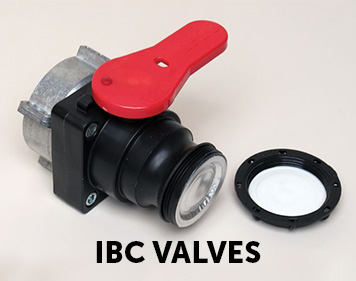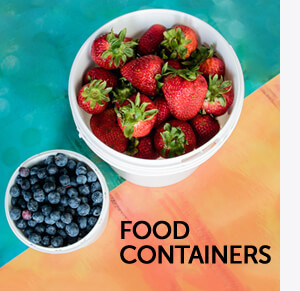We use cookies to improve your experience. By visiting this website, you agree to our Privacy Policy and Terms and Conditions.
Quail Feed: A Wildlife Biologist’s Imagination
Put simply, they’re bird feeders. Nothing for the uninitiated to get excited about, to be certain.
On closer inspection, however, their main components are ordinary plastic and steel pails re-imagined into near engineering marvels by Jim Evans, founder of Quality Wildlife, Waynesboro, Georgia. And today, business is booming and demand for the feeders is spreading from northeast Georgia to bird sanctuaries nationwide.
“I didn’t develop this stuff just because I was looking for something to do,” the soft-spoken wildlife expert says on a crisp autumn day in the middle of quail hunting season. “I developed it because the people here needed a cost effective way to grow their bird populations and nothing was working like I needed it to.
The need Evans spotted back in the early 1990s was simple: most commercially available wild bird feeders were wasteful and poorly designed, leaving expensive grain exposed to predators and the elements. Quality Wildlife’s inaugural product was the Covey Coop, an elegantly simple feeding and watering system whose core was a five-gallon black latched lid steel pail. Later came the “Many Ports” feeder, a simple, yellow, five-gallon plastic pail that dispenses grain through 12 feeding ports along the bottom.

After graduating from the University of Georgia in the mid-1970s, the certified wildlife biologist traversed the state of Georgia year-round for nearly two decades, consulting on game management with private landowners, universities, conservation organizations, as well as state and federal officials.
After years of problematic land management practices and climactic changes, certain species in the wild bird population began to deplete. And the quail enthusiasts were left with increasingly disappointing prospects. “They didn’t want to just be dumping birds out of a box and have to kick them up to get them to fly so their dogs would have something to find,” says Evans. So in 1991, he founded his own company, establishing quality, flight-conditioned quails and pigeons raised in captivity and transitioning them into the wild. The wild bird populations soared. Thousands of acres of land in northeast Georgia began to be dedicated to quail management and hunting. And Evans’ business took off.
The problem solver
The steel pail core of the Covey Coop acts as an outer shell for an inner plastic liner that holds 30 pounds of grain. The ingenious part is the air gap between the outer and inner pails, which protects the grain from condensation and temperature changes. The grain drops through the liner and pail into a small, perforated sheet metal can on the bottom. The grain lasts for weeks and virtually none of it is wasted.
Evans was inspired to design and market his Many Ports feeder several years ago as an economical way for wild bird plantation owners to conserve grain, which had skyrocketed in price after a government decision to divert corn to ethanol production. He tinkered with several prototypes but shelved the project after failing over 200 times to devise a cost-effective way of preventing “dead spots” on the floor of the flat-bottomed pail, where grain would become stagnant and spoil. One early scrapped design involved bolting a plastic cone to the inside bottom of the pail.
One day, a Kansas grower called Evans and asked if he had a better way to feed his large,  penned wild bird population, and Evans revisited the plan. That’s when he got the idea to use a VacuForm to create his own interior cone from the pail bottom itself. “People said I couldn’t do it,” Evans says. “They said I needed to buy more material. But I knew that plastic bucket had all the material I needed. I just needed to find a way to change its shape. One big unknown was whether there was enough plastic to stretch upwards. I found through trial and error where the sweet spot was. As it turns out, I didn’t need a cone. All I needed was a dome.” Like the Covey Coop, grain in the Many Ports feeder lasts for weeks and virtually none of it is wasted. Each device can feed 100 pigeons or 200 quail.
penned wild bird population, and Evans revisited the plan. That’s when he got the idea to use a VacuForm to create his own interior cone from the pail bottom itself. “People said I couldn’t do it,” Evans says. “They said I needed to buy more material. But I knew that plastic bucket had all the material I needed. I just needed to find a way to change its shape. One big unknown was whether there was enough plastic to stretch upwards. I found through trial and error where the sweet spot was. As it turns out, I didn’t need a cone. All I needed was a dome.” Like the Covey Coop, grain in the Many Ports feeder lasts for weeks and virtually none of it is wasted. Each device can feed 100 pigeons or 200 quail.
Evans’ manufacturing facility is in a building next to his home. Inside, Quality Wildlife’s two lone employees – Evans and his wife, Vonnie – do all of the finished assembly and most of the production work on the feeders as the company’s “one-legged man in a butt-kicking contest.” For example, Jim drills holes for the openings on both feeders using a template and plasma cutter, and both install the metal ports inside the drilled holes.
Certain other components require outside help, however. This includes the innovative mushroom-colored polycarbonate outer shells Evans designed for the Covey Coop, which are made by a North Carolina rotary molder, and the metal ports, which are produced by an Alabama fabricator.
Demand for his innovative feeders continues to grow as word spreads. Even the state of Georgia buys the Covey Coops in bulk to supplemental feed the wild birds on state land. Surprisingly, the biggest market for his Many Ports feeders is racing pigeon enthusiasts, which latched onto the devices to preserve the very expensive blends of feed they use.
Evans says he’s happy with the solutions he’s provided for his fellow wild bird friends and customers.
“I feel like we have this down to as efficient method as possible, and it’s solving a problem and helping people,” he says. “Necessity has inspired me more than anything.” When asked if he’s ever tried 3D printers to fabricate parts for his feeders, Evans seems to perk up. “I thought about maybe using them to make ports for chicken feeders. We don’t exactly have room to expand here. Hmm, we’ll just sit on that for a while.”
| Products featured in this article | |
|---|---|
 |
5 Gallon Open Head Yellow Plastic Pail |
 |
5 Gallon Open Head Steel Pail and Plain Lever Lock Cover |






